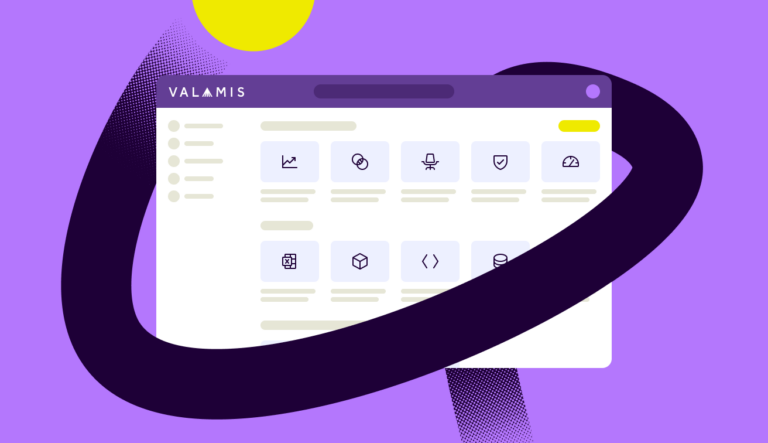Phenomenon-based learning
Explore the theory of phenomenon-based learning and how it can prepare learners to solve real-life problems.

Discover:
- What is phenomenon-based learning?
- The purpose and benefit of phenomenon-based learning
- Origins of phenomenon-based learning
- How does phenomenon-based learning work?
- How can phenomenon-based learning be used within the organization?
- Strengths of phenomenon-based learning
- Weaknesses of phenomenon-based learning
- How to set-up phenomenon-based learning for your learners
- The future of phenomenon-based learning
What is phenomenon-based learning?
Phenomenon-based learning is a learner-centred, multidisciplinary instructional approach that is based on student inquiry and problem solving. No specific subject is taught, nor is there any preset learning objective. Instead, learners investigate and solve their own questions by applying what subjects are relevant to the problem.
For example, to understand and solve a question about climate change, knowledge from different subjects such as science, geography, mathematics, and history may be needed.
This type of learning shares similarities with project-based learning, problem-based learning and inquiry-based learning.
A key difference, however, is that phenomenon-based learning must have a global context and an interdisciplinary approach. This means that a topic must be a real-world issue or “phenomena” and that learners need to apply different perspectives in order to study the topic.
The purpose and benefit of phenomenon-based learning
The goal of phenomenon-based learning is to prepare learners to solve problems in real life.
Instead of passively learning abstract or disconnected concepts, phenomenon-based learning presents real life problems and asks learners to actively discover the knowledge and skills required to solve them.
In the workplace, this could include challenges that the employee or employer wants to solve.
Having employees discover the knowledge and skills needed to solve these work-related problems not only improves skills, but gives immediate relevance to how the skills can be applied to the job.
A criticism of traditional instruction, a method used routinely in corporate learning, is that learning is passive. This means that instructors dictate knowledge to learners. As a result, learners are more focused on the memorization of facts instead of how to apply the knowledge to new problems or ideas. There is also no active engagement on the part of the student.
Traditional instruction is also focused on isolated subjects that seem separate from each other.
Quite often learners are taught the theories and concepts of different subjects but then cannot make the connections between them and how they relate to real life. In other words, learning lacks meaning and context.
On the other hand, engaging employees to solve real life problems, scenarios and events in the workplace encourages connected learning. The employee can discover how the knowledge from different areas are connected and apply to real life.
Phenomenon-based learning provides a more meaningful learning experience by actively engaging learners to solve problems that have a real-world context. It also helps learners to make connections across different disciplines.

The definitive guide to microlearning
The what, why, and how-to guide to inject microlearning into your company.
DOWNLOAD GUIDEImprovements in study results over one year
With one of our customers, Riveria, we compare the study results of students from fall 2014 to fall 2015, after the adoption of phenomenon-based learning pedagogy.
Below are the 2 most remarkable improvements in study results enabled by phenomenon-based learning.
1. Higher pass-through rate in online courses
In fall 2014 a total of 49 percent of students successfully passed their online studies provided to Riveria students.
In fall 2015, the corresponding number of passed online studies was 59 percent.
In January 2016, the pass-through rate of online studies was already over 70 percent.

2. Gaining better grades
Compared to fall 2014, approximately 70 percent of students gained better grades in their studies during fall 2015.
In fall 2014, a total of 81 percent of those who passed their courses gained level T1 (satisfactory) in their studies.
In fall 2015, the increase in grades was notable as 78 percent of students gained either level H2 (good) or K3 (excellent).

Origins of phenomenon-based learning
Phenomenon-based learning has its origins in a 2016 education movement in Finland’s educational system.
The revised education system asks that students take one module each year with the phenomenon-based learning approach. The purpose is to better prepare students for real life.
With this instructional approach, students engage in learning that has more context to real life issues, apply knowledge and skills from different subjects, and develop important skills like communication, critical thinking, problem solving, and teamwork.
These skills are also highly coveted by employers and corporate training programs, giving phenomenon-based learning an appeal reaching beyond the borders of Finland’s education system.
How does phenomenon-based learning relate to learning theory?
Phenomenon-based learning is not an entirely new idea; it has its roots in constructivist learning theory and socio-constructivist learning theory, as well as sociocultural learning theory.
These theories propose that learning is best achieved by the learner actively constructing their own knowledge and experience, instead of by passive instruction. When learners work in a group, learning is seen as also being socially constructed.
Sharing a similar theoretical framework, phenomenon-based learning has a lot in common with problem-based learning and inquiry-based learning.
How does phenomenon-based learning work?
The model of phenomenon-based learning is based on the following:
- Learners ask a question that relates to real life that is of personal interest.
- Learners engage in research to find a solution by studying the topic from different angles and perspectives.
- Instructors facilitate the process by guiding students to learn the concepts and skills needed to solve the problem.
- Learners present and deliver their solution in a chosen format.
How can phenomenon-based learning be used within the organization?
Ask employees to solve a problem
Phenomenon-based learning goes beyond the traditional classroom or digital learning module by not having a specific set of learning objectives or topics.
So how can it fit in with organizational learning needs? The answer is in the approach.
Instead of telling employees what to learn, have employees come up with a problem or question they want to solve or investigate that pertains to their job or the organization.
Once the employee has identified the question they want to answer, they need to be provided with the time and resources to research and learn the skills and knowledge needed to solve the problem or question.
This can include web-based research, in-house research, online learning resources, or interviews.
This approach is already in use in certain professions, such as User Experience professionals and consultants.
Phenomenon-based learning can provide new insight and fresh answers to old problems.
Employees engaging in a phenomenon-based learning project for training purposes, however, can then apply new skills and knowledge to solve the problem or question and present their findings in a mutually agreed format.
Phenomenon-based learning in corporate learning
Phenomenon-based learning seems to be the answer to the learning needs of the 21st century. After all, we need better problem solvers, critical thinkers and team players more than ever before. We also need learners who can think outside of the box and look at the big picture.
So is phenomenon-based learning right for your needs?
Let’s take a look at the strengths and challenges of this instructional approach, which may help you to decide if it’s the right approach for your needs.
Strengths of phenomenon-based learning
- Fosters greater engagement in learning new knowledge and skills because learners are working towards what interests them personally.
- Enables deeper learning because learners are making connections across subjects and seeing practical relevance to real life.
- Learners develop stronger skills in communication, teamwork, critical thinking, and problem solving.
- Learners become more independent as they become responsible for their own learning; this helps to create a more independent, self-sufficient workforce.
Weaknesses of phenomenon-based learning
- If there is a specific learning goal that you want learners to achieve, then phenomenon-based learning may not be the answer. There are no imposed learning goals in phenomenon-based learning because they are created during the learning process.
- Resources and support need to be available for learners to tackle self-led projects. Without a facilitator, learners may struggle to identify and learn the skills and knowledge required to complete the project.
- Phenomenon-based learning is characterized by its lack of formal structure; if your organization is required to have a formal structure where learners need to show completion of skills or knowledge required, this form of learning may not be ideal.
- If feedback and assessment are important to your organization, this may be more difficult with phenomenon-based learning, where assessment is mainly based on learner progress.
How to set-up phenomenon-based learning for your learners
If you want to try and incorporate the ideas of phenomenon-based learning in your own team, course, module or group, follow these steps to get started:
- Have learners choose a “phenomena” from the real world; the topic should have a global context and be related to real life issues or events.
- Develop an inquiry question around this topic that begins with either a “how”, “why” or “what if?”
- Identify and teach the basic concepts that pertain to the learner’s chosen question; what skills or knowledge will they need to solve the problem?
- Ensure that there is an open structure of time for learners to engage in the necessary research and problem solving.
- Facilitate the process by setting up a framework that will help guide students through the process and develop their own way of solving the problem.
The future of phenomenon-based learning
Problem-solving, teamwork and critical thinking are skills that cannot be developed by sitting in a classroom listening to an instructor or by reading and watching an e-learning videos.
These skills are developed from active engagement and doing, a key requirement in phenomenon-based learning.
Phenomenon-based learning may just become more common as the 21st century continues to demand individuals who can learn on their own and solve some of life’s biggest problems.

The definitive guide to microlearning
The what, why, and how-to guide to inject microlearning into your company.
DOWNLOAD GUIDE



